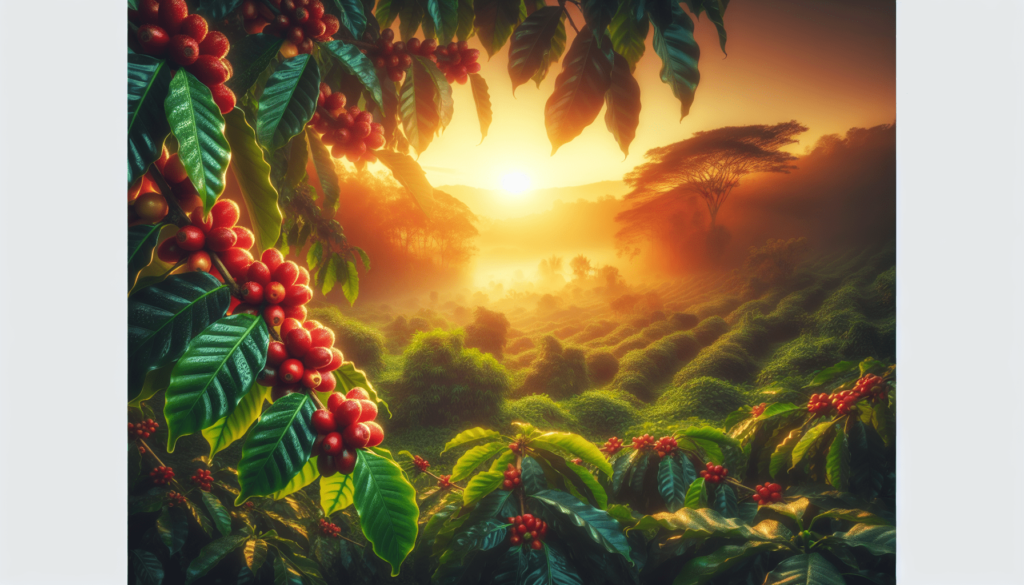Have you ever wondered if there could be something better than your beloved Arabica coffee? Like many coffee enthusiasts, you might be curious about different coffee varieties and how they stack up against each other. In this article, we’ll explore other types of coffee that might just give your favorite Arabica a run for its money. We’ll discuss different varieties, the conditions they are grown in, their flavor profiles, and ultimately what makes them unique and perhaps even superior in certain respects.
Understanding Coffee Beans
Before diving into what might be better than Arabica, it’s crucial to understand the two main types of coffee beans: Arabica and Robusta. These two varieties dominate the coffee market and have profoundly different characteristics.
Arabica Coffee
Arabica coffee, or Coffea arabica, is the most popular coffee globally. It is known for its smooth, aroma-rich profile, often featuring a range of fruity and floral notes.
Characteristics of Arabica
- Taste: Mild, smooth, and often sweet.
- Aroma: Fragrant with hints of fruits and flowers.
- Caffeine Content: Lower caffeine content compared to Robusta.
- Growth Conditions: Grows best at higher altitudes with consistent rainfall and mild temperatures.
Robusta Coffee
Robusta, or Coffea canephora, is often considered the less glamorous cousin of Arabica. However, it has qualities that make it stand out.
Characteristics of Robusta
- Taste: Strong, often described as bitter and earthy.
- Aroma: Woody and nutty.
- Caffeine Content: Higher caffeine content.
- Growth Conditions: Tolerates lower altitudes and harsher climates.
Considering these factors, you can start to see that the superiority of any coffee type often depends on what attributes you value most.
Exploring Lesser-Known Coffee Varieties
While Arabica and Robusta dominate, other less popular varieties deserve attention.
Liberica Coffee
Liberica, or Coffea liberica, might be the underdog in the coffee world, but it offers unique characteristics that set it apart.
Characteristics of Liberica
- Taste: Distinctly fruity and floral but also woody.
- Aroma: Intense and somewhat smoky.
- Caffeine Content: Similar to Arabica but higher than that of Arabica.
- Growth Conditions: Thrives in hot and humid climates, often cultivated in Malaysia and the Philippines.
Excelsa Coffee
Excelsa, once classified as a variety of Liberica, has recently been given its classification.
Characteristics of Excelsa
- Taste: Strong tartness, almost fruity, with a lingering aftertaste.
- Aroma: Unique and robust.
- Caffeine Content: Relatively low.
- Growth Conditions: Grows mid-range in altitude, often found in Southeast Asia.

Comparing Different Coffee Types
To facilitate your understanding, let’s compare these different coffee types side-by-side using a table.
| Feature | Arabica | Robusta | Liberica | Excelsa |
|---|---|---|---|---|
| Flavor | Mild, Smooth | Strong, Bitter | Fruity, Woody | Tart, Fruity |
| Aroma | Fragrant, Floral | Woody, Nutty | Smoky, Intense | Robust, Unique |
| Caffeine Content | Low | High | Medium | Low |
| Growth Conditions | High altitudes, Mild | Low altitudes, Harsh | Hot, Humid Climates | Mid-range altitude |
What Makes a Coffee “Better”?
Determining what coffee is “better” is subjective and often depends on an individual’s taste preferences and the coffee’s intended use.
Taste and Aroma
For many, taste and aroma are the defining characteristics.
- Arabica is valued for its mildness and aromatic complexity.
- Robusta offers a strong and somewhat bitter flavor, ideal for espresso.
- Liberica and Excelsa bring unique flavors that could be more appealing depending on individual preferences.
Caffeine Content
For those needing a caffeine kick, Robusta might be preferred due to its higher caffeine content. Arabica and Excelsa offer a milder choice with lower caffeine levels.
Growth Conditions and Sustainability
Environmental factors also play a role. Arabica requires specific conditions, often making it more susceptible to pests and disease. Robusta, Liberica, and Excelsa are generally more resilient, which could contribute to sustainability, especially in changing climates.

Specialty Coffee: Beyond the Mainstream
Specialty coffee takes the coffee experience to another level, focusing on unique flavors, ethical sourcing, and exceptional quality.
Single-Origin Coffee
Single-origin coffee refers to beans sourced from a specific location, often providing an unblended taste profile distinct to the region.
- Pros: Unique flavors, transparent sourcing.
- Cons: Can be more expensive, limited availability.
Micro-Lot Coffee
Micro-lot coffee comes from a specific plot of a farm, often carefully cultivated and processed to bring out unique flavors.
- Pros: Exceptional quality, unique flavors.
- Cons: Very limited availability, higher cost.
Fair Trade and Organic Coffee
For the ethically-minded consumer, Fair Trade and Organic certifications assert ethical and sustainable practices.
- Fair Trade: Ensures fair wages and conditions for farmers.
- Organic: No synthetic pesticides or fertilizers.
Brewing Techniques: How Method Changes Experience
The brewing method can drastically alter the coffee experience, enhancing or muting certain flavors.
Pour Over
Pour-over coffee highlights the bean’s intricate flavors, making it a preferred method for single-origin varieties.
- Pros: Clear, nuanced flavors.
- Cons: Time-consuming.
Espresso
Espresso brewing intensifies the coffee’s flavors and caffeine content, making it suitable for robust varieties like Robusta.
- Pros: Intense flavor, quick.
- Cons: Requires specialized equipment.
French Press
French Press offers a full-bodied, rich coffee, allowing oils and sediments to mix.
- Pros: Rich, full-bodied.
- Cons: Gritty texture, cleanup.
Blending Coffee Varieties
Blending different types of coffee can create unique flavor profiles that highlight the best characteristics of each bean.
Why Blend?
- Flavor Balance: Combine mild Arabica with robust Robusta to achieve a balanced coffee.
- Caffeine Control: Create blends tailored to preferred caffeine levels.
- Consistency: Maintain flavor consistency across batches.
Popular Blends
- Espresso Blends: Often use a mix of Arabica and Robusta.
- House Blends: Can include varying proportions of Arabica, Robusta, Liberica, and Excelsa.
The Role of Processing Methods
Processing is crucial in developing a bean’s flavor. The method used can make or break a coffee’s final profile.
Washed (Wet) Process
Beans are fermented to remove the mucilage before drying.
- Pros: Clean, bright flavors.
- Cons: Requires significant water resource.
Natural (Dry) Process
Beans are dried with the fruit still attached.
- Pros: Fruity, complex flavors.
- Cons: Inconsistent, requires optimal conditions.
Honey Process
A hybrid method where the bean is dried with some mucilage still attached.
- Pros: Balanced flavors, less water needed.
- Cons: Requires meticulous attention.
The Final Verdict: What Is Better Than Arabica Coffee?
After considering various factors, the answer isn’t straightforward. It largely depends on what you’re looking for in a coffee.
For Smoothness and Aroma
If you value smoothness and aromatic complexity, Arabica remains hard to beat. Its mild, often fruity, and floral notes make it a favorite among purists.
For Strength and Caffeine
Robusta wins in terms of strength and caffeine content. This variety offers a bolder, more bitter flavor that stands out in espresso blends and other strong coffees.
For Unique Flavors
If you crave unique flavors, exploring Liberica and Excelsa could be worthwhile. Their distinctive profiles offer something different yet enjoyable.
For Ethical and Sustainable Choices
Fair Trade and Organic certifications add an ethical dimension that might make one coffee preferable over others. Considering the environmental impact and sustainability could be crucial in your decision.
Conclusion
Ultimately, “better” is subjective and depends on your preferences, needs, and values. Arabica may reign supreme for many, but exploring other varieties like Robusta, Liberica, and Excelsa could open up new horizons in your coffee experience. Whether it’s the stronger flavor and higher caffeine content of Robusta, the unique fruity and woody notes of Liberica, or the tart and robust profile of Excelsa, there is a whole world of coffee waiting to be discovered. Perhaps by expanding your palate, you’ll find a new favorite that surpasses even the beloved Arabica.
